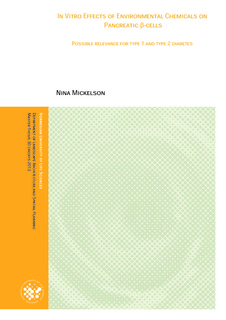| dc.description.abstract | Plastic products are widely used in our modern life, and unbound chemicals such as bisphenol A (BPA) and phthalates can leak out into the surrounding environment. Special attention has been directed toward these chemicals due to high production volume, widespread use, and endocrine disrupting effects. Both BPA and phthalates are detected in urine and serum samples from the majority of the investigated populations. Increased exposure to environmental chemicals has been linked to the increasing incidence of type 2 diabetes (T2D), while possible associations between such chemicals and type 1 diabetes (T1D) has received less attention. However, experimental studies have indicated that these chemicals may affect the immune system and promote autoimmunity and autoimmune diseases like T1D.
The main objective of this study was to investigate whether BPA, and three phthalate metabolites (Mono-iso-butyl phthalate (MiBP), Mono-n-butyl phthalate (MnBP) and Mono(2-ethylhexyl) phthalate (MEHP)) alone or in combination could affect the β-cell viability, susceptibility to cytokine-induced apoptosis, or insulin secretion. These endpoints were chosen since they may be linked to an accelerated development of T1D and T2D. In addition, additive, synergistic or inhibitory effects of combined exposures were examined. The pancreatic rat β-cell line INS-1E cells was used as a model system, and concentrations of BPA, MiBP, MnBP and MEHP relevant for environmental exposures were included (1, 10, 50, 100, 500 nM), as well as higher concentrations (5, 50, 500 μM).
For the chemical concentrations relevant for environmental exposures (1-500 nM), no reduced β-cell viability, increased sensitivity to cytokine induced apoptosis or increased insulin secretion was detected. However, decreased viability was observed at 50 and/or 500 μM BPA, MEHP and the combinatory chemical exposures. BPA seemed to be the most potent of the chemicals. Moreover, the combination of the phthalates and the combination of phthalates and BPA appeared to result in additive effects.
The INS-1E cells are commonly used in mechanistic studies of cytokine-induced apoptosis as well as insulin secretion in response to glucose. However, in the present study, the cell line appears to be insensitive to the environmental chemicals tested. This suggests that INS-1E cells may not be a suitable model system for evaluation of environmental chemicals, since BPA has previously been reported to affect both viability and insulin secretion in primary islets and cell lines. | no_NO |
